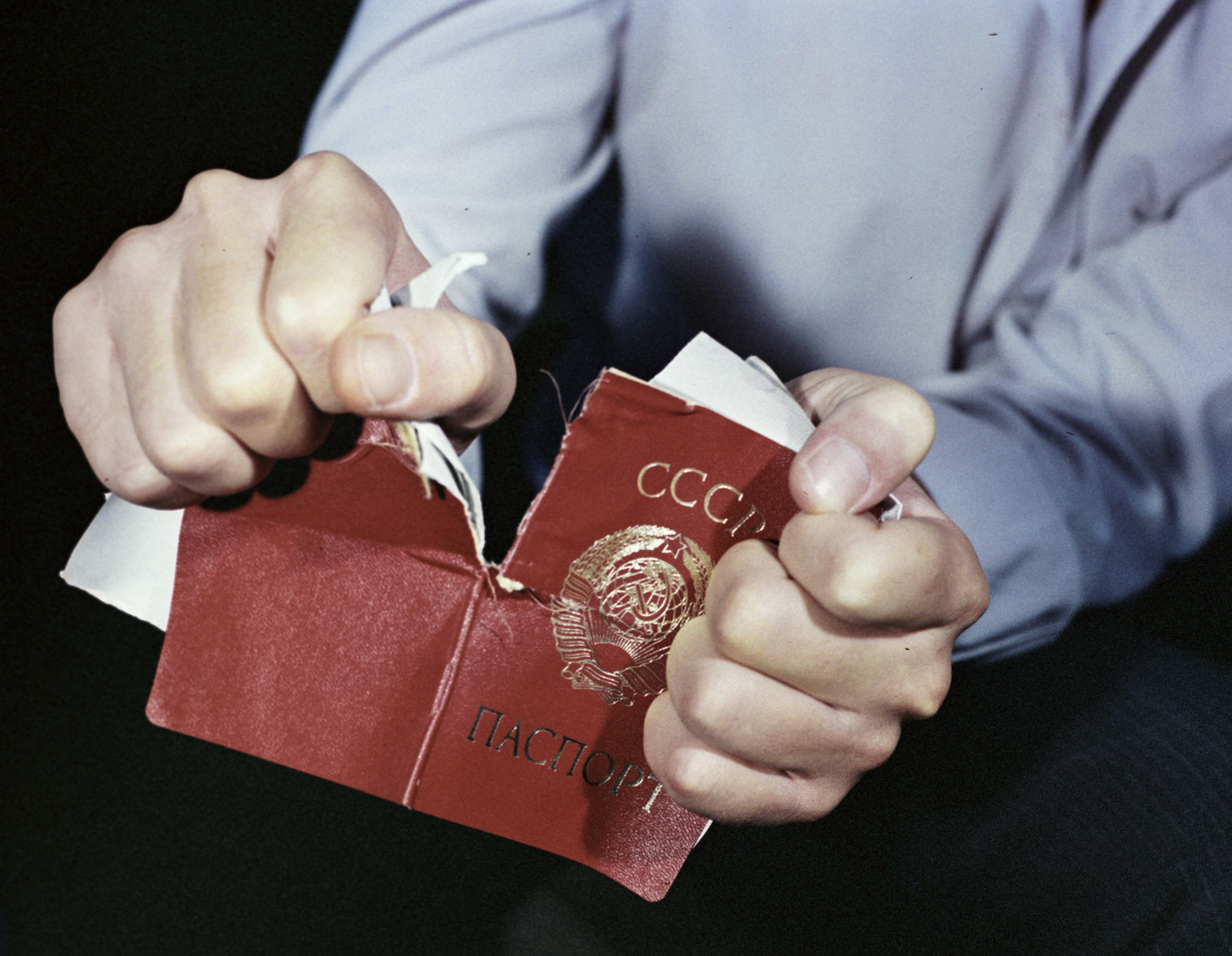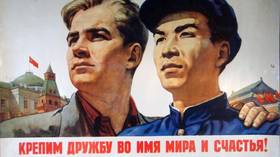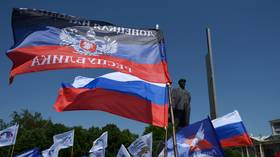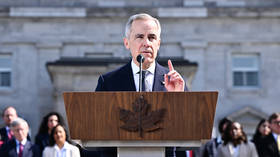Doomed to fail: How Lenin and Stalin placed a ticking time bomb under the Soviet Union exactly 100 years ago

Exactly 100 years ago, on December 30, 1922, the largest country in world history was created. At the First All-Union Congress of Soviets, representatives of the Russian Soviet Federative Socialist Republic (RSFSR), the Ukrainian Soviet Socialist Republic (SSR) and Belarusian SSR, and the Transcaucasian Federation all signed Declaration and Treaty on the Formation of the USSR.
The huge country left an ambiguous legacy, and most of the Bolsheviks’ promises were never fulfilled. However, despite its collapse in 1991, to this day the history of the Soviet Union remains relevant for residents of Russia and the former Soviet republics. In fact, it was the beginning of Bolshevik rule that marked the national revival of minorities and the creation of republics that received not only autonomy, but also the right to secede from
RT recalls how the decision to create the USSR was made and why its structure was determined by a dispute between the “red chiefs” – Vladimir Lenin and Joseph Stalin.
According to Lenin's original plan, the USSR was not really meant to be a “state” from the point of view of “state structure.” It was supposed to be a free confederation of independent states (republics), each having nearly full sovereignty. That’s where the phrase “self-determination up to secession” came from. The unity of this formation was ensured not by “state” or “supranational” mechanisms, but by a single ruling Communist party.
Such a model assumed the possibility of the USSR’s unlimited expansion, up to a global scale. Any country could merely recognize the Communist Party as a “ruling and guiding force” and integrate into the Soviet Union as a new republic. That is why the formula of self-determination up to secession did not particularly concern the leader of the world proletariat, Vladimir Lenin. After all, if communism won over the whole world, where and for what reason would its republics secede? “We still have to conquer five-sixths of the earth's landmass to have the USSR all over the world,” proclaimed chairman of the 5th Congress of the Comintern, Grigory Zinoviev, in June 1924.
This logic applied not only in the 1920s, but also after the end of World War II, when the Belarusian SSR and the Ukrainian SSR became co-founders of the UN, having their own foreign policy departments. When the “global growth” model was transformed during perestroika, it became apparent that the Soviet republics were held together within the Soviet Union only by a bureaucratic management system. The concept of a single space was doomed. As a whole, the USSR could only exist within the framework of its historical mission, “the construction of communism.”

Autonomy or federalization?
In June 1919, the RSFSR, Belarusian SSR, and Ukrainian SSR officially united their armed forces, economy, finance, transport, and mail services. The role of national authorities was assigned to the Russian people's commissariats – analogues of ministries. Republican communist parties joined the Russian Communist Party-Bolsheviks, or ‘RCP(b)’ as territorial organizations. A paradox then arose: the entire territory controlled by the Bolsheviks was governed as a single state, while the republics formally remained independent.
For the Bolsheviks, this meant little – the Communist Party held a monopoly over politics and decision-making anyway. However, following the end of the acute phase of the Civil War, the problem of external representation arose. On the eve of the international debut of the new government, at the Genoa Conference in April-May 1922, it was decided that a delegation of the RSFSR would speak for all the republics. But in the future, foreign partners wanted to clearly see who they were dealing with. Moreover, the country’s own population had to understand where they lived.
Joseph Stalin was the party’s specialist in interethnic relations (although, according to rumors, Nikolai Bukharin could have been involved in writing his main work “Marxism and the National Question”). As the RSFSR People’s Commissar of Nationality Affairs responsible for working out the issue, he proposed to include the remaining republics in the RSFSR as autonomous entities. In autonomization, Stalin saw a means of solving several problems at once. Firstly, it could strengthen a single national space and create a rigid vertical alignment of power. And secondly, it would weaken local nationalists and “social-independents” who advocated the full sovereignty of the Soviet republics and were annoyed by the interference of the central government in their affairs. At the same time, the central power and the all-Russian legislation would extend to new territories. Essentially, the plan did not envisage the unification and formation of a new state, but an absorption of the national Soviet republics by the RSFSR.
In September 1922, Joseph Stalin sent his project to Vladimir Lenin and soon presented the program of "autonomization" before the preparation commission for the Central Committee Plenum on the Relationship Between the RSFSR and Other Soviet republics. The commission, chaired by Vyacheslav Molotov, met on September 23-24, 1922, and managed to approve the plan developed by Stalin. Now it had to be approved at the plenum of the Central Committee, which was scheduled for October 5. However, Lenin, who was in an unstable condition at the time due to deteriorating health, refused to accept the project and demanded the creation of the USSR according to the model of maximum federalization – that is, with semi-independent Union republics.

His proposal would not only create tension within the party, but also show the world an example of a “fundamentally new solution to the national question.” Lenin insisted on the creation of equal treaties between the republics with the possibility of other non-capitalist countries around the world joining the Soviet Union in the future. This included creating a new constitution and forming federal authorities with representatives from all republics. The Soviet Union was conceived by its ideologists as a global communist project, open, among other things, to the accession of those countries that were never part of the disintegrated Russian Empire. This was a serious argument for those who criticized Stalin's plan of autonomization. After all, focusing on the world revolution as a global project, the federation was seen as the most convenient structure of the state, since it would be easier to include new subjects.
At the same time, appeasing some of the nationally oriented Bolsheviks was also an important issue. Some influential national communists, who were especially strong in the Ukrainian SSR and Transcaucasian SFSR (especially among Georgians), opted for the prospect of confederation since they wanted a greater degree of freedom.
This is most clearly evidenced by the so-called “Georgian incident.” On October 20, 1922, at a meeting of the Transcaucasian Regional Committee of the RCP(b) a dispute arose between Grigory (Sergo) Ordzhonikidze and the Georgian Bolsheviks on whether Georgia should enter the USSR as part of the Transcaucasian SFSR or independently. When Ordzhonikidze called his opponents “chauvinistic rot,” one of them, Akaki Kabakhidze, called Ordzhonikidze “Stalin’s donkey," and Ordzhonikidze hit him in the face.
The central power had to intervene, and a Central Committee commission headed by Felix Dzerzhinsky headed to Transcaucasia. Without even talking to the other side, its representatives sided with Ordzhonikidze. Lenin, however, no less strongly supported the Georgian Bolsheviks and demanded that Ordzhonikidze be expelled from the party for assault. At the same time, both Stalin and Lenin understood that the incident, spurred by feelings of nationalism, was a serious issue that could have consequences for the future of the state.

A ticking time bomb
Discussions on autonomization and federalization lasted throughout the autumn of 1922 and ended with the victory of Lenin's project. Shortly before the signing of the treaty, Lenin summoned Stalin to his Gorki residence near Moscow and demanded he change the first paragraph. Soon, he wrote the note “On the formation of the USSR” to politburo members in which he expressed the opinion that the RSFSR should recognize itself as equal with other republics and enter the union “together and on an equal footing with them.” Lenin made concessions, and both political and territorial compromises.
This was motivated by the fear that a single administrative apparatus would lead to bureaucrats discriminating against peoples in remote parts of the union. “It is necessary to distinguish between the nationalism of an oppressive nation and the nationalism of an oppressed nation, the nationalism of a large nation and the nationalism of a small nation. In relation to the latter nationalism, almost always in historical practice, we, the nationals of a large nation, find ourselves guilty of an infinite amount of violence. Moreover, we commit an infinite amount of violence and insults without noticing it,” he wrote. Stalin, however, stood by his opinion and in a note to the members of the politburo called Lenin's position “national liberalism.” Yet the authority of the leader of the world proletariat, despite his serious illness, remained unquestionable.
The morning of December 29, 1922, was lively outside the Bolshoy Theater in Moscow. Figures in overcoats, commissar's leather uniforms, and national costume floated out of the frosty fog. Delegates of the First All-Union Congress of Soviets were gathering to establish a new state. On the same day, the delegations of the RSFSR, the Ukrainian SSR and Belarusian SSR, as well as the Transcaucasian SFSR signed an Agreement on the Formation of the USSR. A day later, it was approved, and December 30 became the day of the formation of the Soviet Union, which existed for almost 69 years.
Except for issues concerning foreign policy and foreign trade, finance, defense, and communications, which were transferred over to the Union authorities, each republic had jurisdiction over all remaining areas. The All-Union Congress of Soviets became the supreme body of the country. Between its convocations, the Central Executive Committee of the USSR, consisting of two chambers – the Union Council and the Council of Nationalities, was established.

The adopted declaration outlined the reasons, principles, and goals for the unification of the Soviet republics. The most important principle was the right of peoples to self-determination, and the ultimate goal was the creation of a World Union of Communist Republics.
“Access to the [Soviet] Union is open to all socialist Soviet republics, both existing and future. The new Union State will serve as a stronghold against world capitalism and a decisive step towards uniting the working people of all countries into a World Socialist Soviet Republic," stated the first Constitution of the USSR, adopted on January 31, 1924.
The new state was deliberately given supranational character, so that in the future any “Soviet socialist republic” could be accepted into it. Advocating the liquidation of the state as such, the Bolsheviks saw only a temporary solution in such a state structure. Initially, Lenin even proposed to call the state the “Union of Soviet Republics of Europe and Asia,” but eventually it was decided to avoid geographical references. The USSR coat of arms is the only example of its kind where the entire globe is depicted but state borders are not marked in any way.
A failed project
However, the hopes of the “Old Bolsheviks” for a world revolution were not fulfilled, and the system created with this perspective in mind could not resist the onslaught of new realities. The thesis of “peaceful coexistence” with the capitalist world was established soon after the Second World War in the mid-1950s, although Vyacheslav Molotov found it “disorienting” until the end of his long life. This wasn’t incidental, since Molotov saw the USSR enter into another race with the United States, in addition to the “arms race” – the race for “quality of life” – also lost by the Soviet system. It turned out that outside of the task of spreading communism in the world, the Soviet Union, as a whole, was an impossibility.

Ultimately, the practical fulfillment of the right of nations to self-determination played out as a cruel joke. Shortly after the creation of the USSR, a process of nation-building was launched in the new Soviet republics. The 185 nationalities of the Soviet Union were divided into union republics directly subordinated to the central authority. These included autonomous republics within the Union republics, autonomous regions within the territories, and national districts. At the same time, it was determined which of the subjects should have rights and privileges, and which should not. For example, each national republic had its own Communist Party and academy of sciences, but Russians were not allowed to have these. Following the foundation of the USSR, the RSFSR was entirely sterilized of state infrastructure.
The new borders between the republics, largely drawn up with economic needs and Communist rationality in mind, also caused discontent. For example, Abkhazians and Ossetians did not want to be part of the Georgian SSR, and the Russians who lived in Donbass did not want to be governed by the Ukrainian SSR. Some majority Tajik regions became part of the Uzbek SSR, and Nagorno-Karabakh, with a predominantly Armenian population, was included in the Azerbaijani SSR.
Subsequently, all these issues caused the aggravation of interethnic conflicts and the implementation of the republics’ right to secession, preserved in all Union constitutions. This right was first invoked in 1990 by the Estonian, Latvian, Lithuanian, and Georgian SSRs. Their example was eventually followed by almost all the other republics, of which there were fifteen in the “classic” composition of the USSR. The attempt made in 1991 by the first and last President of the USSR, Mikhail Gorbachev, to prepare and agree on a new version of the Union Treaty was unsuccessful not only because of the attempted coup by part of the leadership in August, but also because of cardinal disagreements on the division of powers between the central authority and the republics, including the budget issue.
In December 1991, the Supreme Soviets of Ukraine, Belarus, and Russia announced the denunciation of the Treaty on the Formation of the USSR. The corresponding resolution of the Supreme Soviet of the RSFSR was canceled by the State Duma of Russia in March 1996, but the deputies clarified that their decision did not affect the sovereignty of Russia and other former Soviet republics.



















